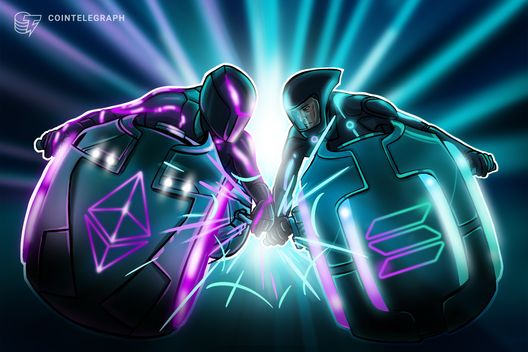In the ever-evolving landscape of cryptocurrency, major developments are on the horizon that could significantly impact the industry. This week’s The Protocol, CoinDesk’s roundup of essential news, shines a spotlight on the upcoming Fusaka upgrade for Ethereum, set to launch in December. Ethereal developers are gearing up to enhance the blockchain’s scalability through a series of meticulous updates following extensive testing on public networks. Meanwhile, the newly minted Plasma blockchain aims to carve out a niche in the stablecoin sector, launching its mainnet beta with a robust liquidity promise of over $2 billion. This ambitious venture comes as Plasma seeks to outpace established players like Ethereum and Solana in a fiercely competitive market.
In addition, Midas and Interop Labs have made waves with their introduction of mXRP, a liquid staking token that enables XRP holders to earn substantial yields, potentially reaching 8%. This innovative offering is designed to bring dormant XRP assets back into play and integrate seamlessly into decentralized finance (DeFi) applications.
Lastly, the Internet Computer (ICP) is making bold moves by positioning itself as a leader in on-chain artificial intelligence, suggesting a future where AI could redefine application development on the blockchain. With its unique approach, ICP aims to create a system where AI autonomously delivers solutions, setting it apart in a crowded field driven largely by traditional infrastructure.
As the market sees fluctuating trends, including some bearish sentiments tied to BlackRock’s nasdaq-listed ETF and Bitcoin’s recent price drop, the regulatory landscape is also shifting. The U.S. Commodity Futures Trading Commission and Treasury Department are pushing forward with initiatives focusing on stablecoin regulation, paving the way for more structured integration of cryptocurrencies into the broader financial system.

Key Points from The Protocol – Cryptocurrency Weekly Wrap
-
Fusaka Hard Fork on Ethereum:
The tentative roadmap for Ethereum’s major upgrade, Fusaka, is set for December, aiming to enhance blockchain scalability and blob capacity.
-
Plasma Blockchain Launch:
The Plasma blockchain, specifically designed for stablecoins, will launch its mainnet beta on September 25, with over $2 billion in liquidity at launch.
-
New Liquid Staking Token – mXRP:
Midas and Interop Labs introduced mXRP, allowing XRP holders to earn up to 8% returns by utilizing dormant XRP supply.
-
ICP’s AI Integration:
The Internet Computer is pushing for AI integration directly on the blockchain, potentially redefining the future role of developers in application building.
-
Market Sentiment and BTC Price Movement:
Cautious sentiment prevails in BTC trading; the market shows a spike in ‘buy the dip’ calls, indicating potential further price declines.
-
US Regulatory Developments:
New initiatives by the CFTC and Treasury Department aim to integrate stablecoins into traditional financial systems, impacting crypto regulations and adoption.
Comparative Insights on Emerging Trends in Cryptocurrency
The recent developments in the cryptocurrency landscape showcase intriguing advancements, particularly with Ethereum’s upcoming Fusaka upgrade and the introduction of the Plasma blockchain for stablecoins. The planned Fusaka upgrade aims to enhance Ethereum’s scalability, promising incremental improvements that could significantly boost transaction efficiency. This could reinforce Ethereum’s position atop DeFi platforms but also intensifies competition with the rapidly evolving technical architecture of other blockchains like Solana and Plasma.
Ethereum’s competitive advantage lies in its established network and strong developer community, which could ensure a smoother upgrade process compared to newcomers. However, the gradual approach may also allow competitors to innovate faster. Plasma’s strategy to target stablecoins entails the introduction of a uniquely designed architecture aimed at facilitating zero-fee transactions. This aggressive approach may draw liquidity away from Ethereum and other established chains, but it also faces challenges in gaining traction amidst existing giants like Ethereum and Solana, which already dominate the stablecoin market.
On the other hand, the launch of Midas’s liquid staking token, mXRP, designed to capitalize on dormant XRP assets, presents a unique value proposition, particularly in a market craving yield-generating opportunities. The competitive advantage for mXRP is its integration with existing DeFi applications, allowing XRP holders to earn passive income while still participating in the decentralized ecosystem. However, such initiatives could potentially dilute liquidity in the broader XRP market, causing some volatility issues for holders not participating in staking.
Furthermore, the Internet Computer (ICP) is making bold claims by positioning itself as a leader in on-chain AI applications. This creates a competitive edge against traditional blockchain networks, promising innovative possibilities for application development. Yet, despite these advancements, there rests an inherent risk; ICP’s trajectory heavily relies on the market’s acceptance of AI-centric models against established networks that have proven their reliability.
Target audiences for these updates range from developers and tech-savvy investors looking to capitalize on innovations, to institutional players who may find new liquidity avenues through offerings like Plasma. The rapid evolution also garners attention from regulatory bodies, signaling potential challenges as policymakers strive to keep pace with these fast-moving developments. Stakeholders, particularly in trading or investment sectors, could find these advancements beneficial or turbulent, influencing both market confidence and strategic positioning in a competitive landscape.

















